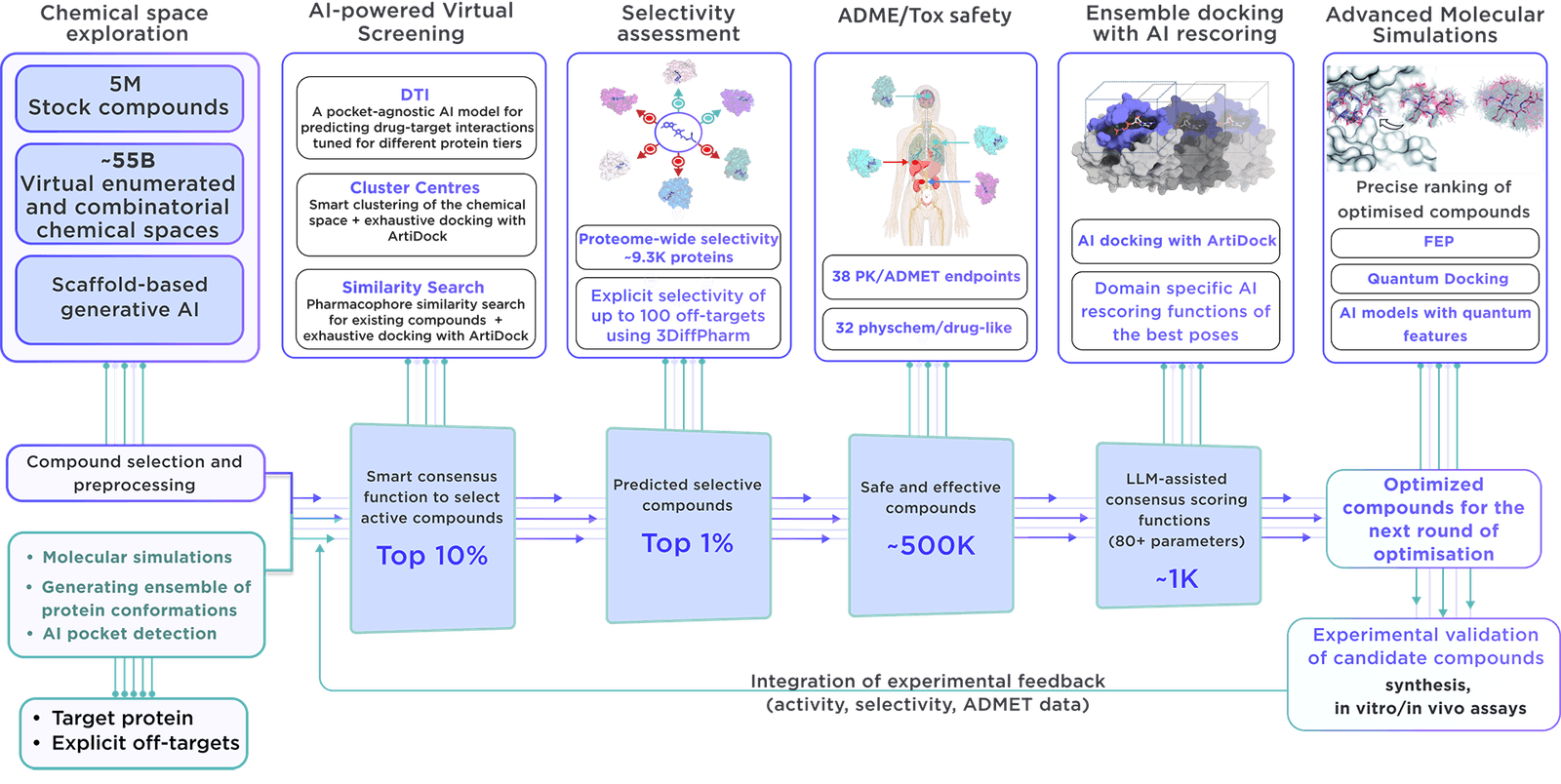Focused On-demand Libraries - Receptor.AI Collaboration
Explore the Potential with AI-Driven Innovation
The focused library is created on demand with the latest virtual screening and parameter assessment technology, supported by the Receptor.AI drug discovery platform. This method is more effective than traditional methods and results in higher-quality compounds with better activity, selectivity, and safety.
We pick out particular compounds from an extensive virtual database of more than 60 billion molecules. The preparation and shipment of these compounds are facilitated by Reaxense.
The library includes a list of the most effective modulators, each annotated with 38 ADME-Tox and 32 physicochemical and drug-likeness parameters. Furthermore, each compound is shown with its optimal docking poses, affinity scores, and activity scores, offering a detailed summary.
We employ our advanced, specialised process to create targeted libraries for enzymes.
The procedure entails thorough molecular simulations of the catalytic and allosteric binding pockets, accompanied by ensemble virtual screening that factors in their conformational flexibility. When developing modulators, the structural modifications brought about by reaction intermediates are factored in to optimize activity and selectivity.
Our library is unique due to several crucial aspects:
- Receptor.AI compiles all relevant data on the target protein, such as past experimental results, literature findings, known ligands, and structural data, thereby enhancing the likelihood of focusing on the most significant compounds.
- By utilizing advanced molecular simulations, the platform is adept at locating potential binding sites, rendering the compounds in the focused library well-suited for unearthing allosteric inhibitors and binders for hidden pockets.
- The platform is supported by more than 50 highly specialized AI models, all of which have been rigorously tested and validated in diverse drug discovery and research programs. Its design emphasizes efficiency, reliability, and accuracy, crucial for producing focused libraries.
- Receptor.AI extends beyond just creating focused libraries; it offers a complete spectrum of services and solutions during the preclinical drug discovery phase, with a success-dependent pricing strategy that reduces risk and fosters shared success in the project.
Receptor.AI
Q8NCH0
UPID:
CHSTE_HUMAN
ALTERNATIVE NAMES:
Dermatan 4-sulfotransferase 1
ALTERNATIVE UPACC:
Q8NCH0; Q6PJ31; Q6UXA0; Q96P94

